What do Alexander the Great, Cleopatra and King Richard the Lionheart have in common? Larnaka, of course. Each had dominion over the island at one point in time, and Larnaka’s position on the coast of Cyprus made it an irresistible port city for any ambitious ruler. But let’s rewind a few thousand years, to the Bronze Age (2,500-1,050 B.C.), when Larnaka was the most populated part of the island. Back then, the city was known as Kition.
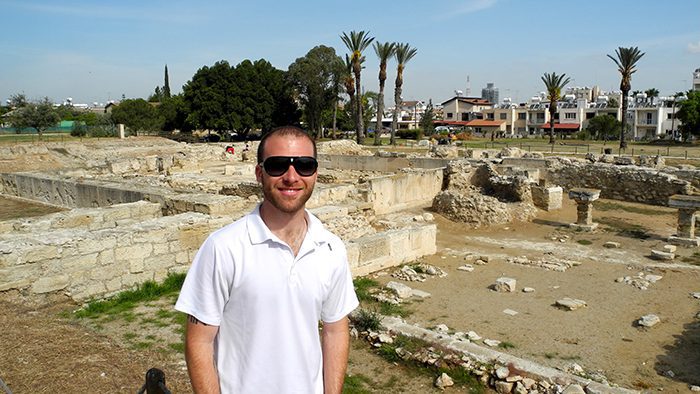
Ancient Kition was first used as a center for copper mining, but eventually developed into a bustling port city. Larnaka’s salt lake is another reason for Kition’s commercial success. Salt was a hot commodity during the Middle Ages and Kition had plenty of it, becoming one of the largest exporters of salt at the time.
Almost anywhere you dig in Larnaka, there will be ruins of a prior civilization. Teeming with rich history, Larnaka is the first stop of choice for many before moving on to explore other parts of the island.
Don’t forget to explore around Larnaka! Check out our 8 epic day trips from Larnaka here
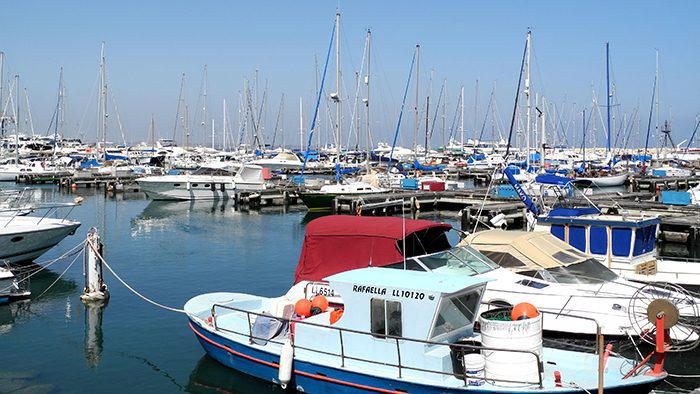
The Larnaka district provides visitors the comforts of a modern city while also giving them access to explore rural villages that have been virtually unchanged by modern technology. Modern Larnaka is a place where seaside restaurants comingle with medieval structures and where boutique shopping and coffee breaks are the pastimes of choice. It is an ideal “home base” of sorts if you plan to take day trips to other parts of the island. You can expect lots of sunshine, archaeological wonders and authentic Cypriot villages along the way. In the Larnaka region, it’s all about the culture!

According to the Gospel of John, St. Lazarus of Bethany was raised from the dead by Jesus Christ. And according to Orthodox traditions, Lazarus relocated from Judea to Cyprus after his resurrection and was later appointed the first Bishop of Larnaka.
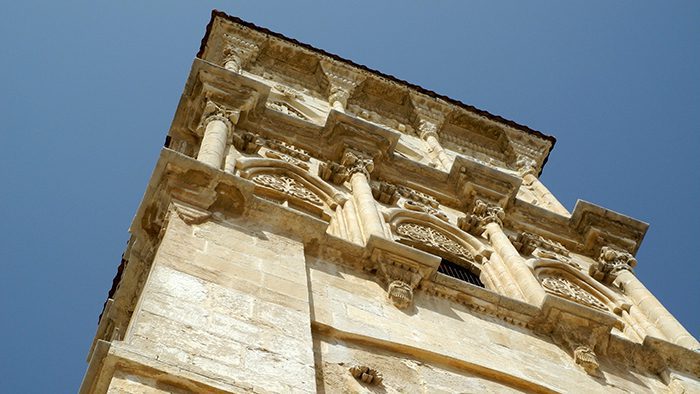
Orthodox traditions further state that upon his [second] death, he was buried where the Agios Lazaros Church now stands. This Byzantine structure dates back to the early 10th century and is a tremendous source of pride for Cypriots. It was built with limestone blocks and houses precious Baroque iconostasis (religious paintings). St. Lazarus’ tomb is located beneath the church and is inscribed with the words, “Lazarus, the friend of Christ.” Next to the Agios Lazaros Church is the Ecclesiastical Byzantine Museum, which houses religious icons and relics.
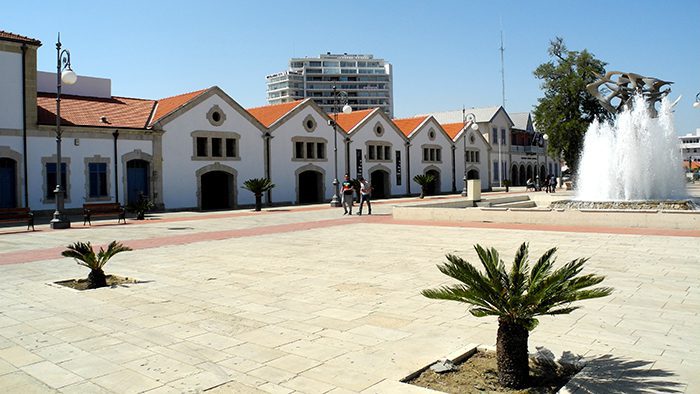
Located at the north end of Athens Avenue, Europe Square was built in 1996 to commemorate the European Union. At its center is a modern fountain featuring a piece named Seagulls in Flight by Greek sculptor Theodoros Papagiannis. Framing the square are the island’s first British colonial buildings — where the British port master resided and had his offices. On the second floor of the old customs building is where the Historic Archives Museum is now. Here, important documents, photographs, books, maps, coins, and seals are stored.
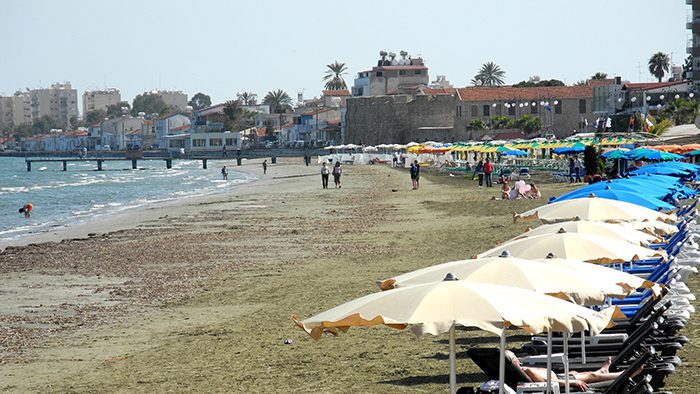
Finikoudes means small palm trees in Greek, and the Finikoudes Promenade has plenty of palm trees, although they are anything but small. This lively section of Athens Avenue is in many ways the heart of Larnaka — a bustling commercial and tourist center. The area is packed with beach-goers and espresso-sipping tourists all year round. It also has plenty of restaurants, bars, shops and hotels. The area was developed in the 1920s and has since grown into a beautiful pedestrian-friendly area.
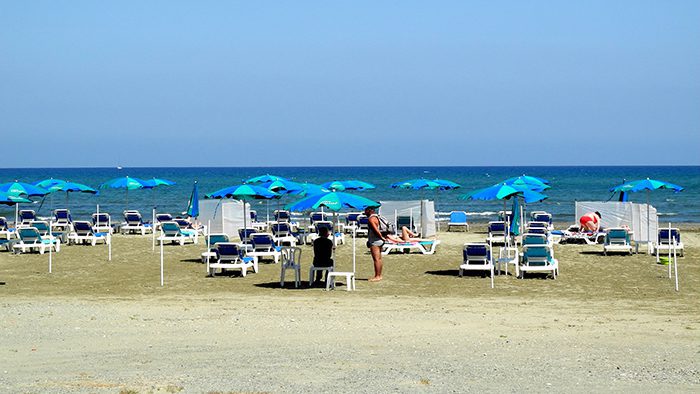
Finikoudes Beach is a 1,640-foot-long sandy strip of coastline dotted with beach umbrellas and sunburned tourists. The water is shallow and relatively warm throughout the year, plus there are lifeguards on duty and bathroom facilities, all of which make Finikoudes Beach ideal for water sports enthusiasts and families with young children. Walk or jog along Finikoudes Promenade for unobstructed water views and fantastic people watching. At night, the area’s restaurants and bars come alive with activity.
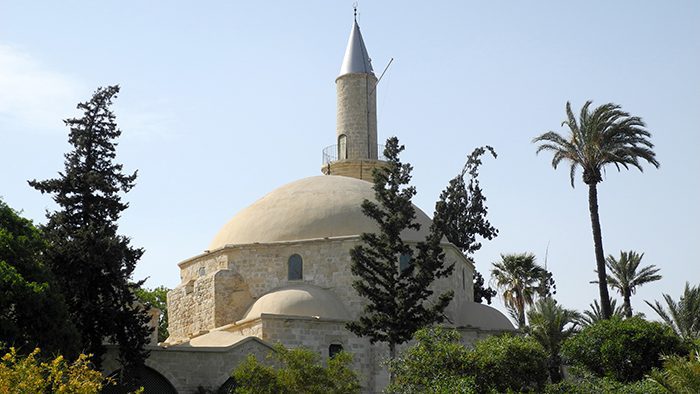
Larnaka’s salt lake is a natural wonder that is not to be missed. Located just outside of Larnaka’s city center, near the airport, Larnaka Salt Lake has traces of fossil life more than four million years old! It is actually a network of four salt lakes with a combined area of 1.3 square miles. A nature trail surrounds the lake and offers spectacular views and the chance to spot migratory birds. During the winter months, more than 85 species of water birds come here to dodge the cold, but the flamingos steal the show every year. They come to feast on the lake’s protein-rich brine shrimp.
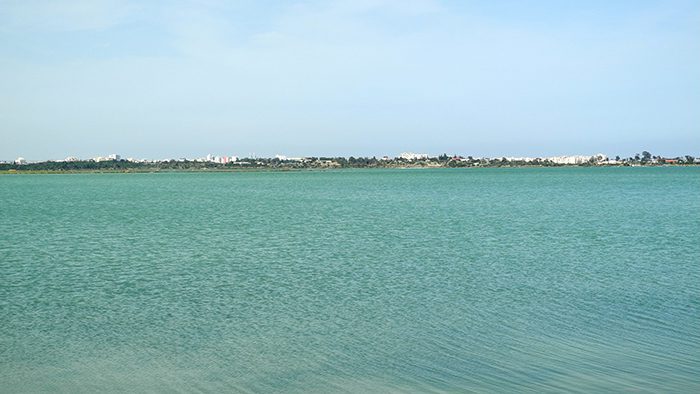
Larnaka Salt Lake is also known for Hala Sultan Tekke, or the Mosque of Umm Haram. All Muslims regard this shrine as a holy site. Umm Haram was the aunt of the prophet Mohammed and wife of the general that led the first Arab attack on Cyprus. It is believed that she died here sometime between 647 and 649 A.D. when she fell off her mule and broke her neck during the victory parade. She is an important figure in the Islamic faith because Mohammed told her he had a vision from God showing that she would be the first to conquer the island and allow for Arab expansion throughout the Mediterranean. Hala Sultan Tekke is a stunning structure that sits on the edge of Larnaka Salt Lake. Thousands of pilgrims visit here each year.
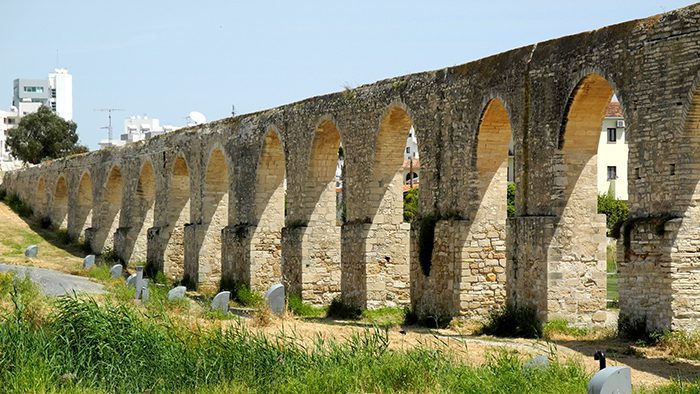
The Kamares Aqueduct is 10-minute drive from Larnaka’s city center. The Romans are responsible for the original construction, but the aqueduct was completely rebuilt in 1745 by Ottoman governor, Bekir Pasha. The Kamares Aqueduct was designed to transport water from the Tremithos River to Larnaka — a distance of about 10 miles. Its 75 arches and intricate stonework make it an impressive site worth the short drive.
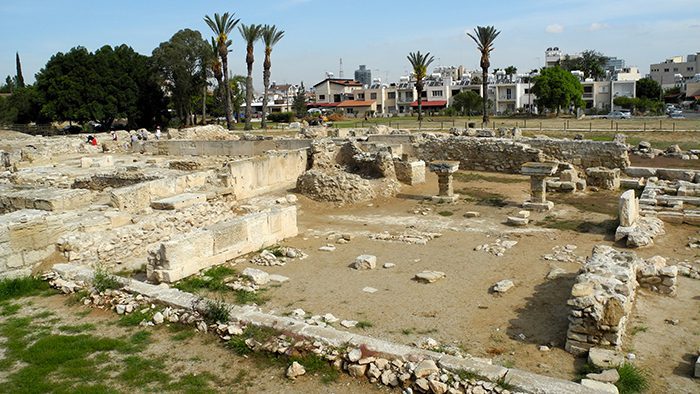
You have probably already gathered that the Larnaka district has a long history. The modern city that exists today was dramatically different in the 14th century B.C. Back then, under the power of the Phoenicians, the city started to develop into an important port. With the years came prosperity as Kition exported copper and agricultural goods to Egypt and other destinations in the Aegean and Mediterranean Seas.
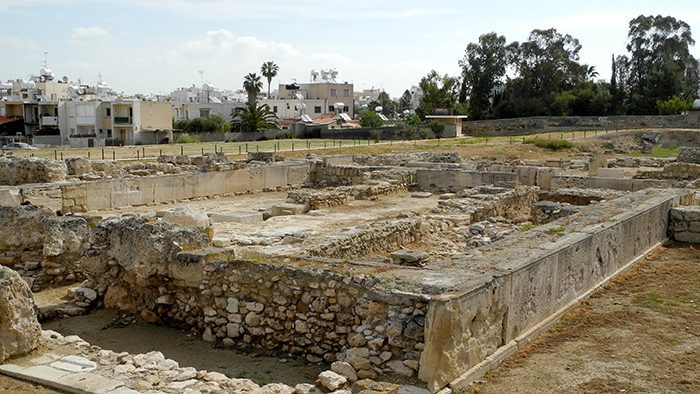
Digging up the entire city to expose the infrastructure of Larnaka’s previous societies is out of the question, but there is an excavated section near the city center. This small complex known as the Kition Archaeological Site is an ancient sacred place with four small temples and a large shrine dedicated to the fertility goddess, Astarte. She is believed to be the precursor for the Greek goddess, Aphrodite. The Kition Archaeological Site has a wooden platform and footpath encircling the ruins.
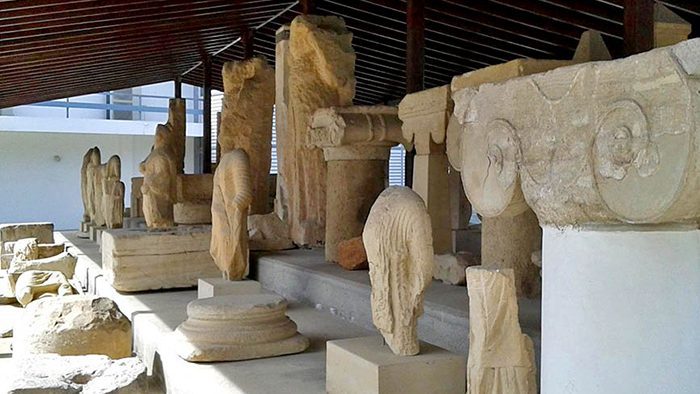
A visit to the Larnaka District Archeological Museum is to travel back in time to the wonder of ancient Cyprus. It is located near the city center, west of Europe Square. The museum has four galleries showcasing Bronze Age artifacts, Iron Age tools, Phoenician pottery, rare coins, Roman sculptures, and a variety of other culturally significant pieces found throughout the Larnaka region.
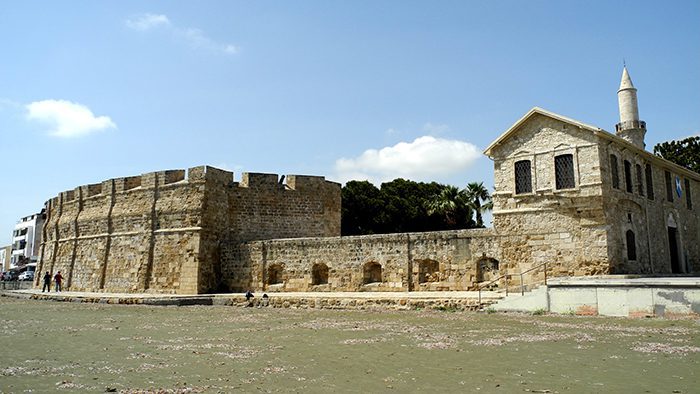
Larnaka’s Medieval Castle, which sits on the south end of Athens Avenue, has a unique and debatable history. It was originally a Byzantine stronghold during the 12th century before becoming a protective fortress under the rule of King James II of Cyprus. Some historians even argue that the Turks built the castle in the 17th century. When the British arrived in Cyprus, they used it as a prison and execution chamber until 1948.
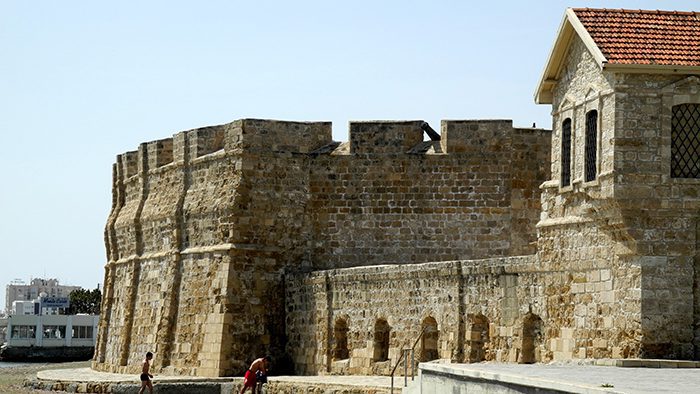
Today, the castle features a central courtyard and a small museum on the second floor exhibiting items from its past — Medieval pottery, Byzantine paintings, Venetian armor, and Ottoman cooking utensils.
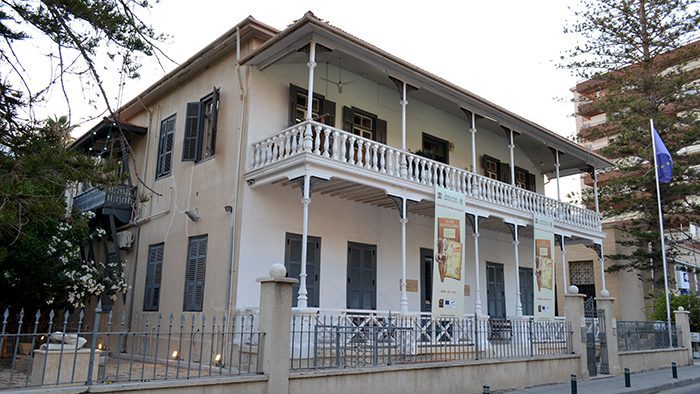
The Pierides family emigrated to Larnaka from Venice in the mid-18th century, and over the years, it has amassed a fascinating collection of Cypriot antiquities. Together with the Laiki Bank Group, the Pierides family formed a trust in 2000. The colonial building that was once the Pierides family mansion now houses a priceless collection of artifacts and artwork ranging from the Neolithic Era to the Frankish Era (1191 — 1489 A.D.) In addition to the indoor galleries, the Pierides Laiki Bank Museum also has an outdoor modern sculpture garden on the property.
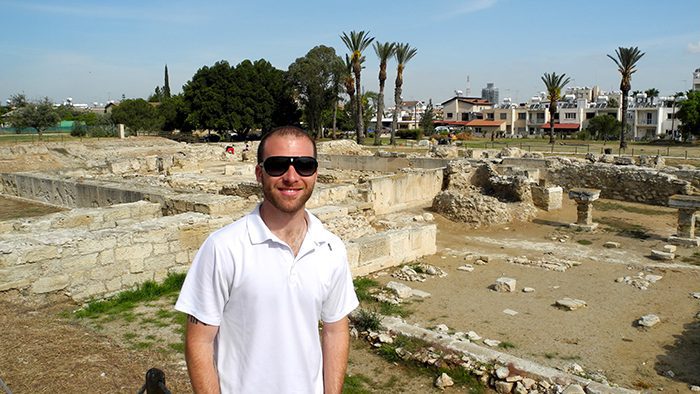
Larnaka is a lively coastal city all year round thanks to its warm climate and array of dining and entertainment venues. It is a place where ancient and modern structures coexist and where Cypriot culture is proudly on display in civic architecture, Byzantine heritage and friendly locals.
Larnaka’s history is deeply connected to the sea. The Larnaka district is known for its pristine beaches and quaint villages. Heading to Agia Napa or Paralimni for the day is a great way to experience the island’s famed beaches. But for those who want to stay put, Larnaka has plenty of sand and surf to keep anyone satisfied. Towns like Lefkara, Voroklini, Protaras and Kornos each have something different to offer travelers. Whether you are in search of local crafts, relaxation or mouth-watering meze, the villages within the Larnaka region have it all.
Larnaka is undoubtedly my favorite region in Cyprus. Here, you have the conveniences of a modern metropolis near so many authentic Cypriot towns and villages. Larnaka’s archaeological sites, Byzantine structures, modern buildings and natural beauty make it a fascinating region for every type of traveler.
Time zone: GMT +2
Getting around: Other than walking or driving, Larnaka has a reliable public bus system operated by Zinonas Buses, LTD. A one-way ticket is €1, a full day ticket is €2 and a 7-day pass is €10.
Shopping: The area behind the Finikoudes Beach Promenade is Larnaka’s shopping district. Here you will find quirky souvenir shops, handmade leather goods, fine jewelry, wines and spirits, traditional bakeries, specialty boutiques, and mainstream clothing stores. The commercial center on Nikolaou Rossou Street has several stalls with handmade items such as soaps, incense, desserts, and Teratsomelo (carob syrup). The commercial center is open daily 7:30 a.m. – 5 p.m. except Wednesdays and Saturdays when it closes at 1 p.m. and Sundays closed all day. Commandaria (Cypriot brandy), wine and honey are fantastic items to buy for yourself or loved ones back home. The best place to buy local honey is at the Saturday Fruit Market in the Municipal Car Park (near St. Lazaros Church).
Non E.U. citizens can claim back V.A.T. on goods they are taking home from Cyprus as long as the total purchase amount (from one or many V.A.T. participating stores) is more than €171 and less than €17,100. Ask the storeowner for the tax-free document. Before you depart, present your purchase receipts, tax-free documents and passport at the airport to receive a tax refund.
Hours of operation: Working hours can be a bit of a challenge in Cyprus, but as a general rule:
Currency: Euro (€)
Currency converter: XE
Best time to go: Cyprus’ Mediterranean climate means dry, hot summers (mid-May through mid-September). May and June are relatively pleasant months with little to no rainfall. During this time you can expect less heat and fewer crowds on the beach.
Practical info:
Nearby airports:
Larnaka International Airport (LCA)
+357 24 643633
Pafos International Airport (PFO)
+357 26 007 100
Tours: The Larnaka Tourism Board has recently begun conducting free guided walking tours and excursions to nearby villages. There is no pre-booking necessary for either of the two tours offered at this time, Larnaka-Past and Present and Scala-Its Craftsmen. Visit Larnaka Region for more information.
What are your recommendations for the best places to visit in Larnaka? We would love to hear from you! Leave us a question or comment below.
Counter
101 Countries • 1432 Cities